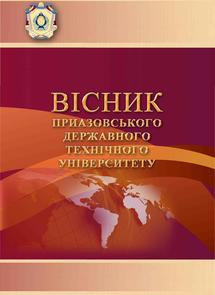Оценка нематериальных активов.
DOI:
https://doi.org/10.31498/2225-6725.31.2016.104867Ключові слова:
нематеріальні активи, вартість, структура, патенти, оцінка, відчутні активи, невідчутні активи.Анотація
У роботі обґрунтовано актуальність оцінки нематеріальних активів підприємств для сучасного бізнесу. Відзначено складність їх обліку, яка викликана високою швидкістю старіння знань, що акумульовані у таких активах.Також відзначено, що англомовний термін «intangible assets» має більш широке трактування. З метою надання більш широкого розуміння терміну «нематеріальні активи» запропоновано розділити нематеріальні активи на дві групи. До першої групи, яку запропоновано називати «відчутні активи», віднести ті нематеріальні активи, що вже відображають в балансі підприємств. До другої групи - або «невловимим активів» - віднести ті активи, які поки ще не можна відобразити в бухгалтерській звітності, тому що їх монетарна оцінка та операції над нею неможливі в правилах традиційної алгебри.Виконаний аналіз можливостей оцінки нематеріальних активів показав, що існує безліч методів їх немонетарній оцінки, наприклад, бальних, які дозволяють організувати внутріфірмове управління такими активами, але не дозволяють оцінити ринкову вартість бізнесу.Вивчені методи монетарної оцінки нематеріальних активів не можуть повною мірою відобразити ринкову вартість бізнесу, хоча можуть бути використані при злиттях, продажах й операціях на фондових біржах. Також в роботі зроблено висновок про доцільність переходу до нових стандартів обліку, що орієнтовані на зацікавлені сторони підприємства та безперервнузвітність за вартістю.Посилання
- Druker P. Post-capitalist Society / P. Druker. – HarperBusiness. – 1994. – 240 p.
- Лев Б. Нематериальные активы : управление, измерение, отчетность / Б. Лев. - М. : Квинто-Консалтинг. – 2003. - 240 с.
- Рейли Р. Оценка нематериальных активов / Р. Рейли, Р. Швайс. – М. : Квинто-Консалтинг. – 2005. – 792 с.
- Андриссен Д. Невесомое богатство. Как определить реальную стоимость вашей компании в будущем мире нематериальных активов / Д . Андриссен, Р.Тиссен. — М. : ЗАО «Олимп—Бизнес», 2004. – 304 с.
- Mertins K. Knowledge Management: The Best Practices / K. Mertins, P. Heising, J. Vorbeck. – Springer-Verglad Berlin Heirberg New York. – 2003. – 385 p.
- Holtham C. Measurement and Reporting of Intangibles – a European Policy Perspective / C. Holtham, R. Youngman [Электронныйресурс]. – Режимдоступа : https://www.academia.edu/1032461
- Ситник Й. Методичні основи рейтингового оцінювання рівня інтелектуалізації системи менеджменту підприємств /Й . Ситник //Актуальні проблеми економіки. - № 7, 2014. – С. 214 – 223.
- Положення (стандарт) бухгалтерського обліку 8 «Нематеріальні активи». - [Электронный ресурс]. – Режим доступа : http://zakon5.rada.gov.ua/laws/show/z0750-99
- Официальный сайт организации InvestorsinPeople [Электронный ресурс]. – Режим доступа : https://www.investorsinpeople.com/iip-standard
- Хотомлянський О.Л. Вплив навчання та розвитку персоналу на показники фінансового стану підприємства / О.Л. Хотомлянський, Т.А. Дерев’янко // Схід: Аналітично-інформаційний журнал. – 2007. – № 4 (82) – С. 41 - 46.
- Хотомлянский А.Л. Влияние обучения и развития персонала на показатели операционной деятельности предприятия / А.Л. Хотомлянский Т.А. Деревянко // Вісник Приазовського державного технічного університету: Зб. наук. праць. – Маріуполь: ПДТУ, 2007. – Вип. 17. - С. 237 – 242.
##submission.downloads##
Опубліковано
2016-05-26
Як цитувати
Дерев’янко, Т. А. (2016). Оценка нематериальных активов. Вісник Приазовського Державного Технічного Університету. Серія: Економічні науки, 1(31), 211–217. https://doi.org/10.31498/2225-6725.31.2016.104867
Номер
Розділ
Статті
Ліцензія
Авторське право (c) 2019 Тамара Антонівна Дерев'янко

Ця робота ліцензується відповідно до Creative Commons Attribution-NonCommercial 4.0 International License.
Журнал використовує ліцензію Creative Commons Attribution 4.0 International (CC BY 4.0).
Це означає, що автори зберігають авторські права та дозволяють іншим:
-
вільно використовувати, змінювати, адаптувати, поширювати статті;
-
навіть у комерційних цілях — за умови зазначення авторства та посилання на джерело.
Повний текст ліцензії: https://creativecommons.org/licenses/by/4.0/deed.uk



